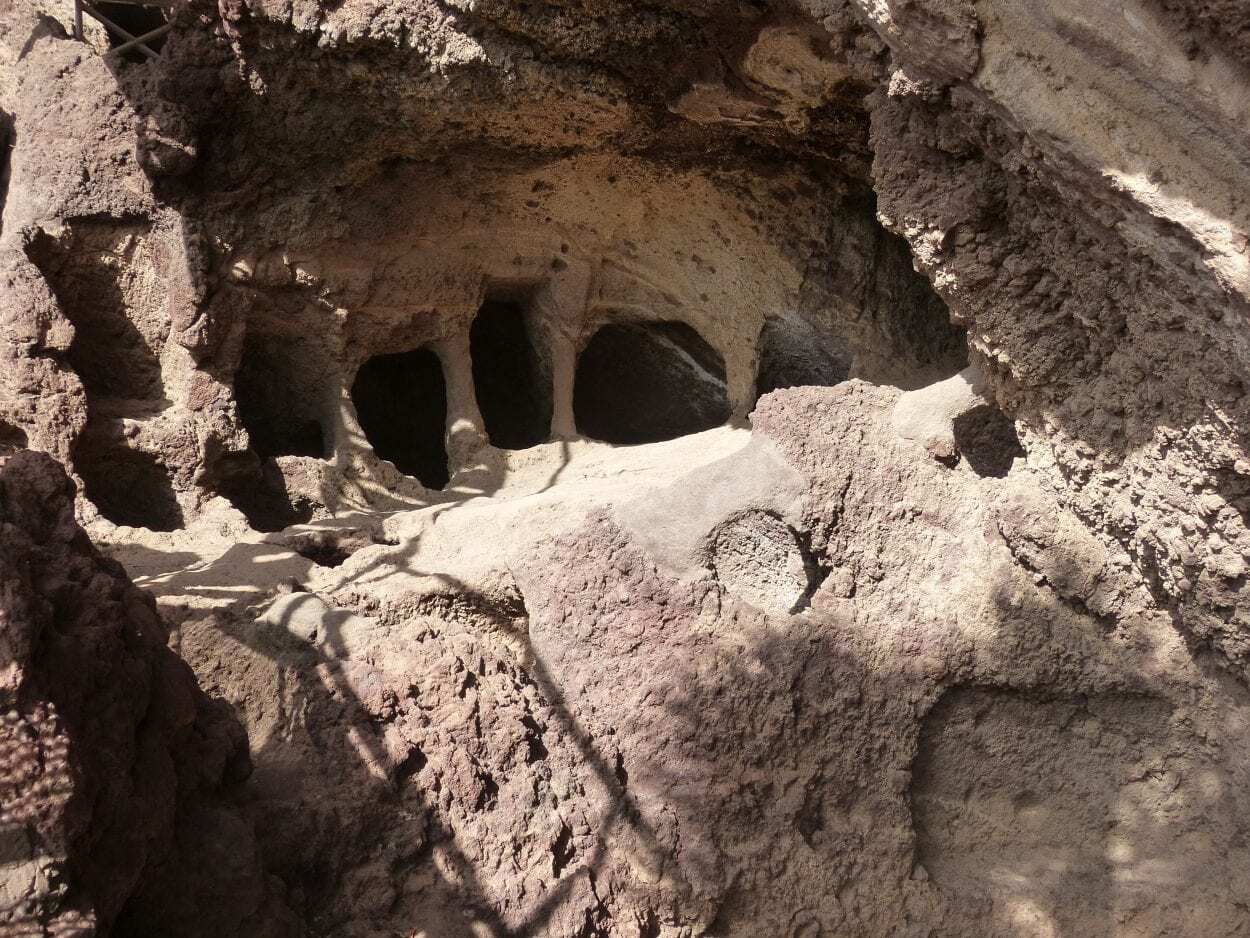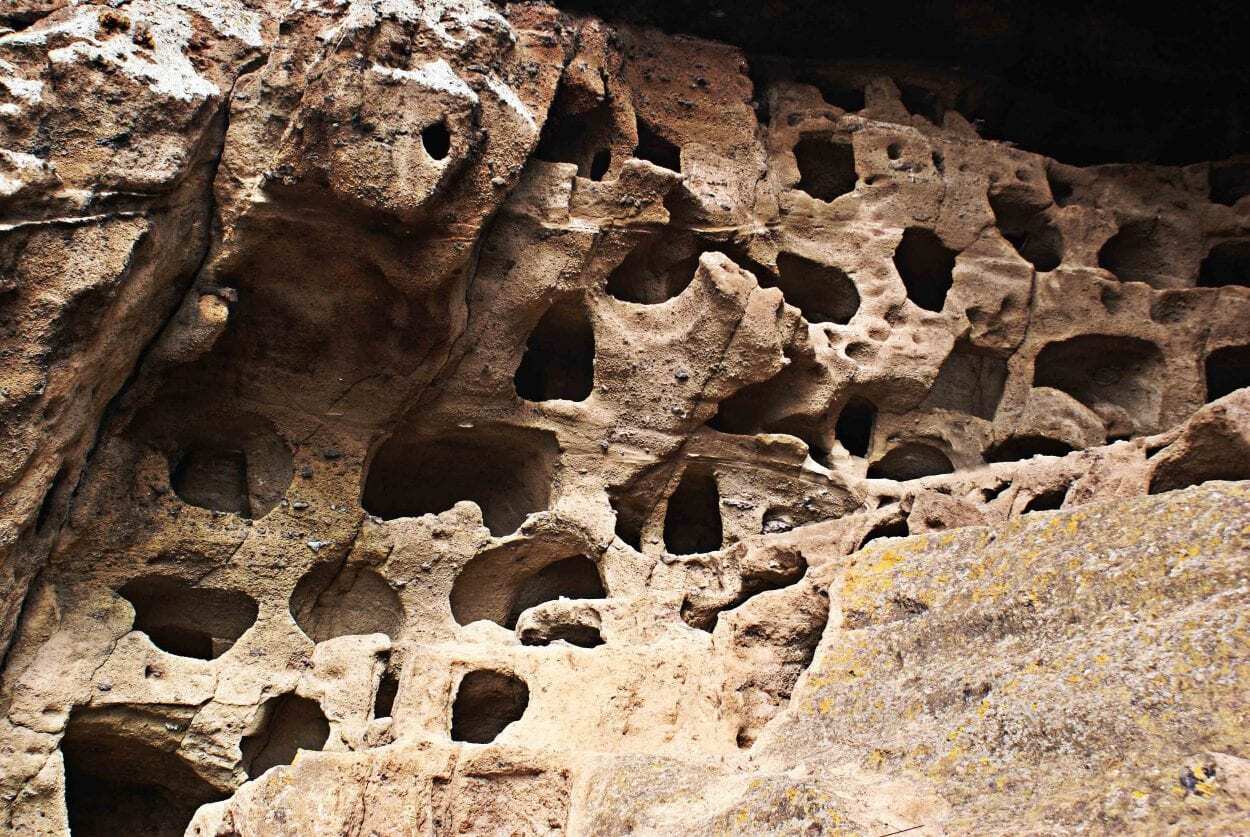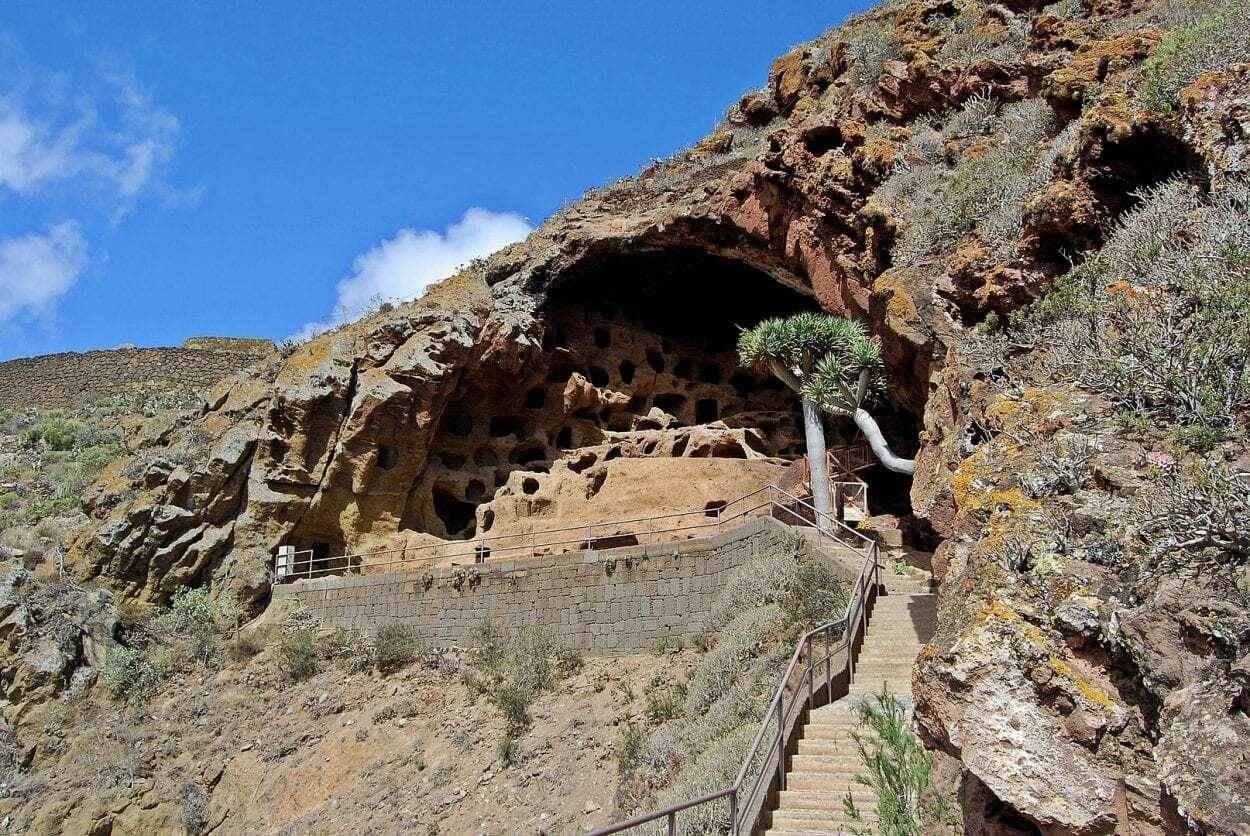The Caves of Valerón, also known as Valerón’s “Monastery” is an ancient pre-Hispanic rock-cut complex of honeycomb caves on the north-west face of the Mountain of the Galician (“Montaña del Gallego”) in the Spanish island of Grand Canaria.
The caves were constructed by the ancient Canarians using stone and wooden tools, inside a large 20-metre-tall natural arch made from a basaltic arch covering a volcanic tuff (a type of rock made of volcanic ash ejected from a vent during a volcanic eruption that lithified into a solid material).
The ancient Canarians, or Guanches were the first aboriginal inhabitants of the Canary Islands, who were genetically similar to ancient North African Berber peoples of the nearby North African mainland. After the arrival of the Spanish to the Canaries, the native population was mainly wiped out, with some surviving population groups assimilating into the Spanish settler population.
Some sources claim that the caves date from before the Roman period, however, radiocarbon dating of dried fig seeds found in situ suggests that the caves date from around AD 1040, with other radiocarbon studies of dried barley proposing dates from AD 1330 up to 1410.

According to local legend, the caves were used as a monastery or a place for celibate harimaguadas (priestesses) to be placed in confinement, with whom young women of noble class came to live until their marriage (although there’s no archaeological evidence to support this).
The cave complex consists of several levels containing 298 compartments, that were used as silos, closed with a wooden plank, and marked with a seal called a “pintadera” that indicated the owner. The natural arch regulated the temperature and humidity, providing an ideal location for the storage of foodstuffs from the elements.
Academics have suggested that the caves share comparisons with similar granaries or agadirs found in North Africa, which would have a common storage area communally guarded, with chambers allocated for specific individuals.

Several dwelling caves are also found within the vicinity of the Caves of Valerón, such as the La Presa caves and those within the complex itself, with the ancient settlement of Layraga most likely being associated.
In 1978 the caves were declared a Historical Artistic Monument or Site of Cultural Interest within the category of an Archaeological Zone by royal decree, and in 1985 became a Property of cultural interest.
Header Image Credit – Felix König – CC BY 3.0





